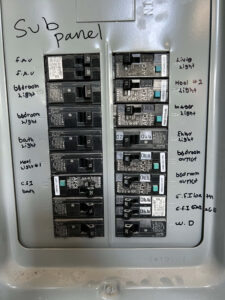
To clear your doubts, we’ve written this article to talk about the difference between AFCI and circuit breakers to better appraise the electrical wiring in your home and know if you are lacking any.
A circuit breaker is a switch that automatically shields a circuit from overheating or short circuits. It is used to safeguard the circuit against aberrant currents running across it.
It detects large current surges or short circuits and shuts down the power to safeguard the wiring and the house from further harm.
An AFCI, on the other hand, is a device that detects a huge spectrum of arcing electrical defects to prevent the electrical supply from becoming a fire ignition source. Overcurrent protection devices that are used today do not detect low-level dangerous arcing currents that might cause electrical fires.
That said, you may still be unclear how these all apply to the electrical connections in your place of residence. Keep reading to get a full grasp.
What Is An Arc Fault?
Arcing is a term that most people are familiar with. Arcing can be intentional, such as when using an arc welder, or unintentional, like when a tree falls on a power cable during a storm, causing a current flow between conductors or to the ground.
An arc defect of fault is an unintentional arc caused by the current flowing in an undesired route. Arcing produces high-intensity heating at the arc’s point, leading to burning fragments that can easily ignite nearby materials like wood frames and insulation.
These arcs can reach temperatures above 10,000 degrees Fahrenheit.
How an ACFI Differs From Your Conventional Circuit Breaker
All breakers are created to keep your house or business’s wires from becoming overwhelmed with current overload. If the circuit is bearing too much load or there is a short circuit, all breakers are intended to automatically turn off.
Arc fault breakers can detect arcing in circuits as well. Arcing is the sparking that occurs when two conductors are damaged, and it is a fire hazard since the arcing is highly hot. To weld steel, an arc welder uses an electrical arcing.
A standard breaker may not detect this since the load required to trip the breaker is not always present, but instead, an Arc Fault breaker will detect it and shut off the circuit before it can catch fire.
To guarantee proper and safe operation, these devices are created and tested monthly.
Conclusion
We trust that you’ve been well informed with the brief information on this post with regards to the difference between an ACFI and a circuit breaker. If you need further help to identify or installing any of the following, contact us at CLD Electric.
